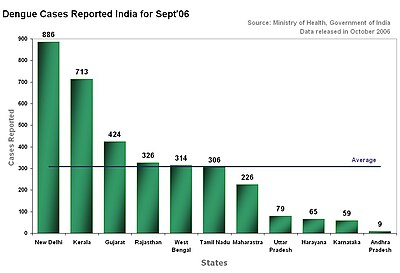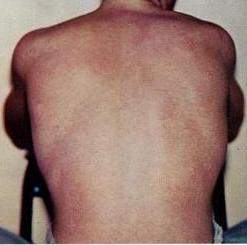
Dengue fever is a mosquito-borne tropical disease caused by dengue virus. It is frequently asymptomatic; if symptoms appear they typically begin 3 to 14 days after infection. These may include a high fever, headache, vomiting, muscle and joint pains, and a characteristic skin itching and skin rash. Recovery generally takes two to seven days. In a small proportion of cases, the disease develops into severe dengue with bleeding, low levels of blood platelets, blood plasma leakage, and dangerously low blood pressure.

All India Institute of Medical Sciences, New Delhi, also known as AIIMS Delhi, is a public medical research university and hospital in New Delhi, India. The institute is governed by the AIIMS Act, 1956 and operates autonomously under the Ministry of Health and Family Welfare.
In the 2005 dengue outbreak in Singapore, a significant rise in the number of dengue fever cases was reported in Singapore, becoming the country's worst health crisis since the 2003 SARS epidemic. In October 2005, there were signs that the dengue fever outbreak had peaked, as the number of weekly cases had declined and the outbreak of this infectious disease declined by the end of 2005.

Chikungunya is a mosquito-borne alpha virus that was first isolated after a 1952 outbreak in modern-day Tanzania. The virus has circulated in forested regions of sub-Saharan African in cycles involving nonhuman primate hosts and arboreal mosquito vectors. Phylogenetic studies indicate that the urban transmission cycle—the transmission of a pathogen between humans and mosquitoes that exist in urban environments—was established on multiple occasions from strains occurring on the eastern half of Africa in non-human primate hosts. This emergence and spread beyond Africa may have started as early as the 18th century. Currently, available data does not indicate whether the introduction of chikungunya into Asia occurred in the 19th century or more recently, but this epidemic Asian strain causes outbreaks in India and continues to circulate in Southeast Asia.
The 2006 dengue outbreak in Pakistan was at the time the worst on record. There were 1931 lab-confirmed cases, and 41 confirmed deaths, according to the World Health Organization Regional Office for the Eastern Mediterranean. Other sources report a death toll of 52.

The recent state of health in Venezuela has seen that from 1992 to 1993, there was a cholera epidemic in the Orinoco Delta and Venezuela's political leaders were accused of racial profiling of their own indigenous people to deflect blame from the country's institutions, thereby aggravating the epidemic. During the 1990s, the mortality rate was 318 per 100,000 people for heart and heart-related diseases, 156 for cancers, 634 for external causes, 1,126 for communicable diseases such as chest infections, syphilis, and meningitis, and 654 for certain congenital conditions.
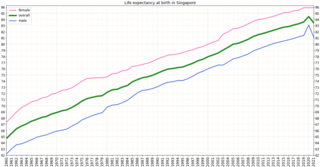
Singapore is one of the wealthiest countries in the world, with a gross domestic product (GDP) per capita of more than $57,000. Life expectancy at birth is 82.3 and infant mortality is 2.7 per 1000 live births. The population is ageing and by 2030, 20% will be over 65. However it is estimated that about 85% of those over 65 are healthy and reasonably active. Singapore has a universal health care system.

Zika virus is a member of the virus family Flaviviridae. It is spread by daytime-active Aedes mosquitoes, such as A. aegypti and A. albopictus. Its name comes from the Ziika Forest of Uganda, where the virus was first isolated in 1947. Zika virus shares a genus with the dengue, yellow fever, Japanese encephalitis, and West Nile viruses. Since the 1950s, it has been known to occur within a narrow equatorial belt from Africa to Asia. From 2007 to 2016, the virus spread eastward, across the Pacific Ocean to the Americas, leading to the 2015–2016 Zika virus epidemic.
The 1994 plague in India was an outbreak of bubonic and pneumonic plague in south-central and western India from 26 August to 18 October 1994. 693 suspected cases and 56 deaths were reported from the five affected Indian states as well as the Union Territory of Delhi. These cases were from Maharashtra, Gujarat, Karnataka, Uttar Pradesh, Madhya Pradesh and New Delhi. There are no reports of cases being exported to other countries.
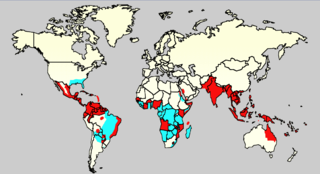
As of 2010, dengue fever is believed to infect 50 to 100 million people worldwide a year with 1/2 million life-threatening infections. It dramatically increased in frequency between 1960 and 2010, by 30 fold. This increase is believed to be due to a combination of urbanization, population growth, increased international travel, and global warming. The geographical distribution is around the equator with 70% of the total 2.5 billion people living in endemic areas from Asia and the Pacific. Many of the infected people during outbreaks are not virally tested, therefore their infections may also be due to chikungunya, a coinfection of both, or even other similar viruses.

Tirath Das Dogra is an Indian forensic pathologist and former Pro-Chancellor and vice-chancellor of SGT University, Budhera Gurgaon Haryana 2013–2017. He is a former director of the All India Institute of Medical Sciences (AIIMS) New Delhi and an authority on forensic medicine. Dogra was a member of the Medical Council of India from December 2013 till its dissolution in September 2018. Dogra was President of National Medicos Organisation Delhi State from 2012 to 2017. He was a member of the TEQ-Equivalence committee and the Administration and Grievance committee of the Medical Council of India. He was a member of the Advisory committee on MOOC's program of University Grants Commission of India New Delhi. Dogra was emeritus professor of forensic medicine and forensic sciences, professor of Andragogy and educational philosophy and advisor, Internal Quality Assurance Cell (IQAC) at SGT University Gurgaon till January 2022. Prof. T D Dogra is a member of the Rehabilitation Council of India.
Jitendra Nath Pande or J. N. Pande was an Indian Pulmonologist and Professor and Head of Medicine at the All India Institute of Medical Studies (AIIMS). He was working as Senior Consultant (Medicine) at Sitaram Bhartia Institute of Science & Research, New Delhi. He died on 23 May 2020 during sleep when he was home quarantined due to COVID-19 positivity during the COVID-19 pandemic in India, in New Delhi.

The 2019–2020 dengue fever epidemic was an epidemic of the infectious disease dengue fever in several countries of Southeast Asia, including the Philippines, Malaysia, Vietnam, and Bangladesh, Pakistan, India, Thailand, Singapore, and Laos. The spread of the disease was exacerbated by falling vaccination levels in certain areas, and by a growing population of mosquitoes, which are the primary carriers of the disease, and which are able to reproduce in larger numbers where humans have littered the environment with plastic containers, which provide an ideal breeding ground for mosquitoes. Affected countries have sought to control the epidemic through increased vaccination efforts, and through efforts to control the mosquito population.
The All India Institutes of Medical Sciences (AIIMS) is a group of autonomous government public medical universities of higher education under the jurisdiction of Ministry of Health and Family Welfare, Government of India. These institutes have been declared by an Act of Parliament as Institutes of National Importance. AIIMS New Delhi, the forerunner institute, was established in 1956. Since then, 24 more institutes were announced.
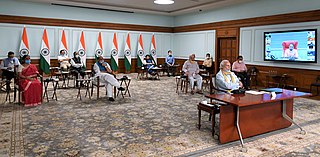
The Indian state governments have responded to the COVID-19 pandemic in India with various declarations of emergency, closure of institutions and public meeting places, and other restrictions intended to contain the spread of the virus.
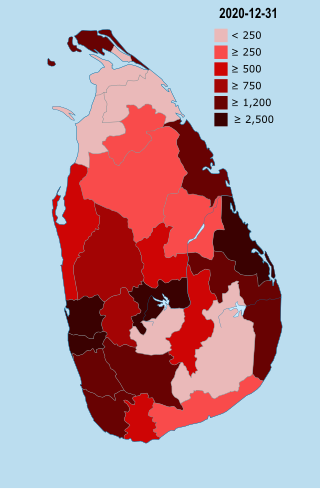
The dengue pandemic in Sri Lanka is part of the tropical disease dengue fever pandemic. Dengue fever is caused by Dengue virus, first recorded in the 1960s. It is not a native disease in this island. Present-day dengue has become a major public health problem. Aedes aegypti and Aedes albopictus are both mosquito species native to Sri Lanka. However, the disease did not emerge until the early 1960s. Dengue was first serologically confirmed in the country in 1962. A Chikungunya outbreak followed in 1965. In the early 1970s two type of dengue dominated in Sri Lanka: DENV-1 type1 and DENV-2 type 2. A total of 51 cases and 15 deaths were reported in 1965–1968. From 1989 onward, dengue fever has become endemic in Sri Lanka.

In early December 2020, an acute neurological disease broke out in Eluru, a city located in the southern Indian state of Andhra Pradesh. The first case was reported on 5 December, with hundreds more falling ill and one person dying over the next week. The cause was initially unknown, but on 20 December, AIIMS and NEERI Research Institute came to a conclusion that pesticides leaching into the water supply is the most likely reason.

The 2022–2023 mpox outbreak in India is a part of the ongoing outbreak of human mpox caused by the West African clade of the monkeypox virus. The outbreak was first reported in India on 14 July 2022 when Kerala's State Health Minister Veena George announced a suspected imported case which was confirmed hours later by the NIV. India was the tenth country to report a mpox case in Asia and the first in South Asia. Currently, India has reported 23 cases of mpox.
In the 2020 dengue outbreak in Singapore, a record-breaking number of dengue fever cases was reported in Singapore. This was part of the wider 2019–2020 dengue fever epidemic which also affected several neighbouring countries in Southeast Asia.

